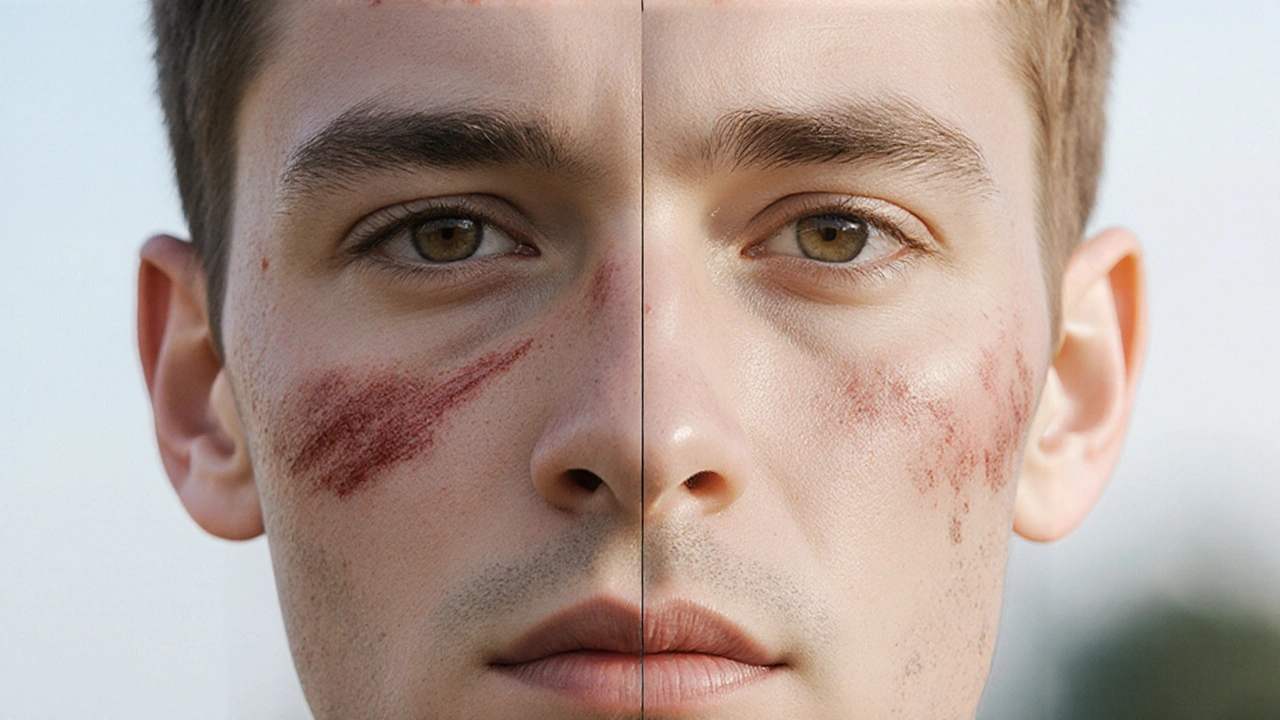When dealing with acne medication side effects, the unwanted reactions that can happen while treating acne. Also known as adverse skin reactions, they can range from mild irritation to serious health concerns. Understanding them helps you stay ahead of problems.
Isotretinoin, a powerful oral retinoid used for severe acne is famous for drying out skin and lips, but it can also trigger joint pain, elevated liver enzymes, and mood changes. If you notice persistent headaches or unusual sadness, contact your doctor right away. This medication requires regular blood tests to monitor liver function and triglyceride levels, creating a clear link between the drug and internal health markers.
Benzoyl peroxide, a common over‑the‑counter topical for acne often causes redness, peeling, or a burning sensation, especially at higher concentrations. Starting with a low 2.5 % formula and building up can cut the irritation in half. Pairing it with a fragrance‑free moisturizer creates a protective barrier that reduces the skin barrier disruption caused by the peroxide.
Topical antibiotics, such as clindamycin or erythromycin applied to the skin may lead to dryness, itching, and, in rare cases, antibiotic resistance. Pairing them with benzoyl peroxide reduces resistance risk, showing how two acne treatments can work together to limit side‑effects while keeping bacteria in check.
Many users also experience photosensitivity when using retinoids or certain oral antibiotics. This means the skin reacts more strongly to sunlight, increasing the chance of sunburn. Wearing a broad‑spectrum sunscreen with at least SPF 30 and limiting direct sun exposure during peak hours creates a practical shield against this side effect.
Another frequent complaint is skin dryness from salicylic acid or retinoid creams. Moisturizers containing ceramides, hyaluronic acid, or glycerin help restore the skin’s natural barrier. Applying moisturizer right after the medication, while the skin is still damp, locks in hydration and reduces flakiness.
Knowing your acne medication side effects helps you choose the right treatment plan. If you’re prone to eczema, you might steer clear of strong topical retinoids and opt for benzoyl peroxide combined with a gentle cleanser. If you have a history of liver issues, your doctor may favor topical options over oral isotretinoin.
Monitoring is key. Keep a simple diary: note the product used, concentration, how your skin feels after 24 hours, and any systemic symptoms like headaches or joint aches. This habit creates a data‑driven approach that lets you and your dermatologist spot patterns quickly and adjust the regimen before minor irritation becomes a major setback.
In addition to the products mentioned, other acne therapies—such as hormonal pills, azelaic acid, or light‑based treatments—have their own side‑effect profiles. While hormonal pills can cause breakthrough bleeding or mood swings, azelaic acid is usually well‑tolerated but may cause a temporary tingling sensation. Light therapy can lead to temporary redness but rarely causes lasting damage.
Overall, the goal is to balance effectiveness with comfort. By understanding the typical side‑effects of isotretinoin, benzoyl peroxide, and topical antibiotics, and by using moisturizers, sunscreen, and careful monitoring, you can keep your skin clear without sacrificing your well‑being.
Below you’ll find a curated list of articles that dive deeper into each medication, share real‑world tips for minimizing irritation, and explain when it’s time to seek professional help. Explore the collection to arm yourself with the knowledge you need for a smoother, safer acne journey.

A detailed side‑by‑side comparison of Tretiva (isotretinoin) and major acne alternatives, covering effectiveness, side effects, cost, pregnancy safety, and monitoring.